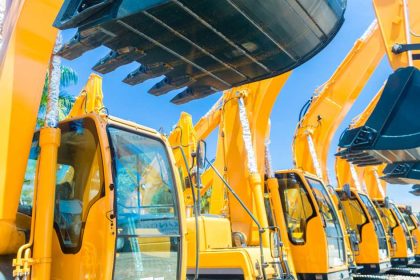Builders have renewed calls for industry to look towards skilled migrant workers to ease the widespread tradie shortages.
According to BuildSkills Australia, 90,000 extra construction workers would need to be found in the next 90 days for the government to meet its target of 1.2 million new homes by 2029.
With little hope of miraculously finding these workers on home soil within the coming months, Master Builders Australia has once again told ministers to incentivise migrant workers to make the move down under.
In their latest supplementary Budget submission, Finding Australia’s missing tradies: Harnessing our skilled migrant workforce, CEO Denita Wawn pleaded the case for helping migrants navigate “the complex and unnecessary barriers” to work in the industry.
“The domestic workforce cannot keep up with demand in the short term. Skilled migration
represents a vital piece of the workforce puzzle,” Ms Wawn said.
Construction is no stranger to migrant workers, with 24 per cent of the total workforce being born overseas. But with pandemic lockdowns and convoluted licensing laws turning workers away, tradies that arrived in the last five years only represent 2.8 per cent of the industry.
Ms Wawn said, for many, it’s simply “too hard” for workers to have their professional skillset recognised in Australia, and they are instead turning to roles that “present fewer hurdles”.
“When seeking to attract more skilled trades into Australia, it is important to look to migrants who are already in the country,” she said.
“Some are waiting on skills assessments or qualifications recognition, which, according to the Parkinson Migration Review, could cost nearly $10,000 and take up to 18 months.
“This is an underutilised cohort of potential workers who could fill workforce gaps in the short term.
Master Builders also made recommendations to provide access to English language education and coaching to help migrants upskill and land a job and subsidise the costs of training to fill any qualification gaps that might exist.
Ms Wawn said she wanted to see financial subsidies for migrant workers to complete trade apprenticeships and ensure the pathways to permanent residency were “clear and enticing”.
Executive Director of Research and Planning for BuildSkills Australia, Robert Sobyra, echoed Master Builders’ submission, saying the “actual quantity of migrants” coming to Australia was not the problem but the “composition of the migration profile”.
“The issue is, at the moment under current migration settings only about 3 per cent of migrants can actually work in the building and construction industry, and we need that percentage to be far higher,” he told SBSNews earlier this week.
“We need to be out there really prioritising people who can work in construction, particularly the skilled trades and the engineers, those sort of occupations that have a very high barrier to entry.
“There’s not much point in bringing unskilled labour because we can source them from within the local population, but those sort of occupations that need three or four years of training to become qualified, they’re the ones that you want to front-load the migration system with.”
Calls for skilled migrants aren’t anything new
The proposal isn’t anything the Government hasn’t heard before. Master Builders has echoed the need for migrant workers several times over the last year as labour shortages constrain the industry’s productivity.
In December last year, the organisation identified labour shortages as the biggest source of cost pressure and disruption for the building and construction industry and claimed skilled migration as one of the key ways to release that pressure.
“With a need of half a million new workers in the next 3-5 years, the domestic workforce simply cannot meet these targets in the short-term and skilled migration will play a key role in plugging that gap,” Ms Wawn said at the time.
However, with the deadline for Prime Minister Albanese’s long-awaited National Housing Accord fast approaching, pressure is mounting on the industry to deliver on the promise of much-needed new homes.







